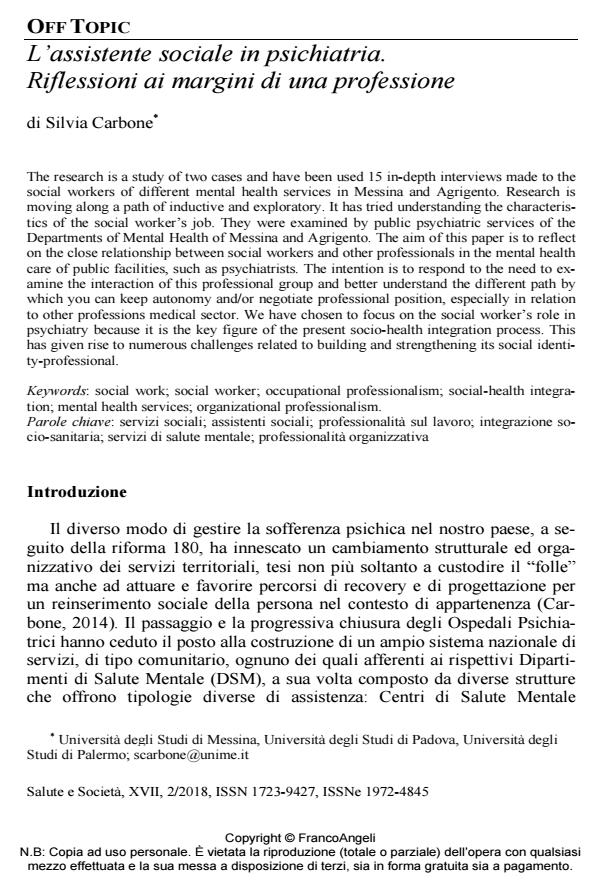L’assistente sociale in psichiatria. Riflessioni ai margini di una professione
Journal title SALUTE E SOCIETÀ
Author/s Silvia Carbone
Publishing Year 2018 Issue 2018/2
Language Italian Pages 17 P. 119-135 File size 91 KB
DOI 10.3280/SES2018-002009
DOI is like a bar code for intellectual property: to have more infomation
click here
Below, you can see the article first page
If you want to buy this article in PDF format, you can do it, following the instructions to buy download credits

FrancoAngeli is member of Publishers International Linking Association, Inc (PILA), a not-for-profit association which run the CrossRef service enabling links to and from online scholarly content.
The research is a study of two cases and have been used 15 in-depth interviews made to the social workers of different mental health services in Messina and Agrigento. Research is moving along a path of inductive and exploratory. It has tried understanding the characteristics of the social worker’s job. They were examined by public psychiatric services of the Departments of Mental Health of Messina and Agrigento. The aim of this paper is to reflect on the close relationship between social workers and other professionals in the mental health care of public facilities, such as psychiatrists. The intention is to respond to the need to examine the interaction of this professional group and better understand the different path by which you can keep autonomy and/or negotiate professional position, especially in relation to other professions medical sector. We have chosen to focus on the social worker’s role in psychiatry because it is the key figure of the present socio-health integration process. This has given rise to numerous challenges related to building and strengthening its social identity-professional.
Keywords: Social work; social worker; occupational professionalism; social-health integration; mental health services; organizational professionalism.
Silvia Carbone, L’assistente sociale in psichiatria. Riflessioni ai margini di una professione in "SALUTE E SOCIETÀ" 2/2018, pp 119-135, DOI: 10.3280/SES2018-002009